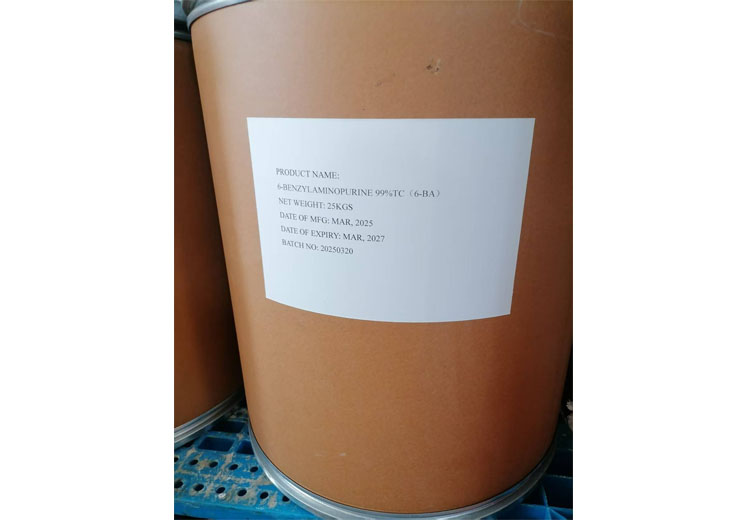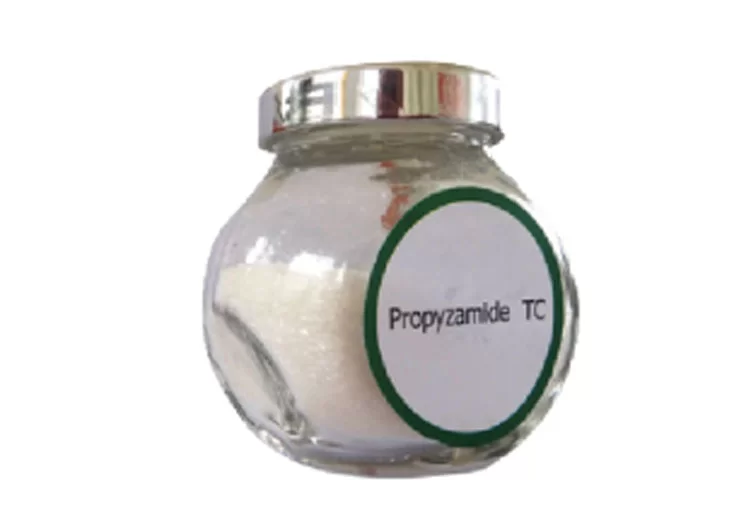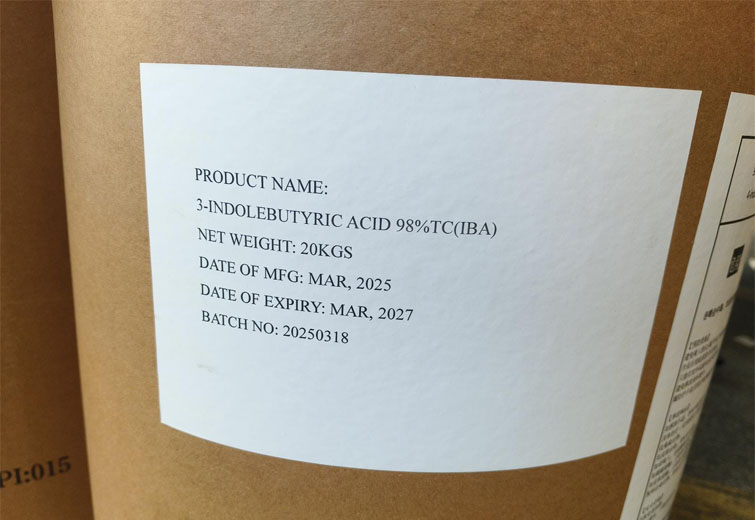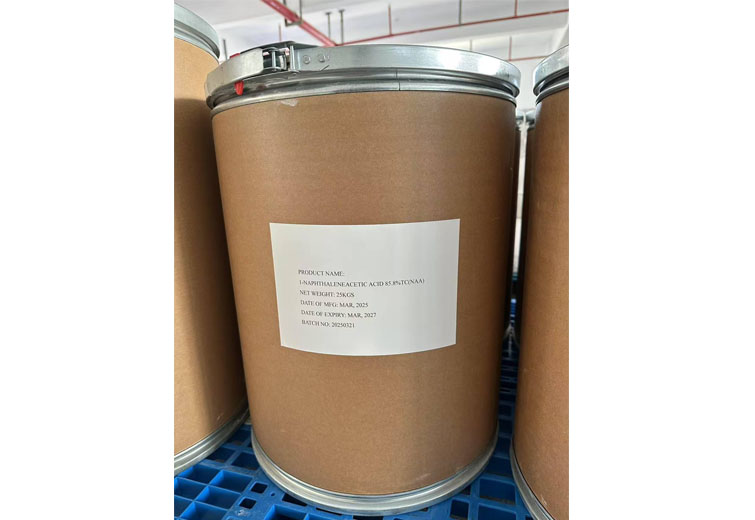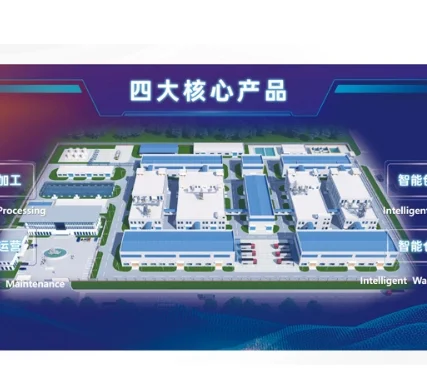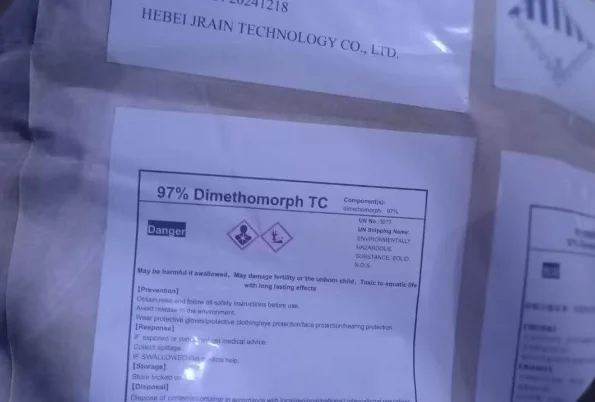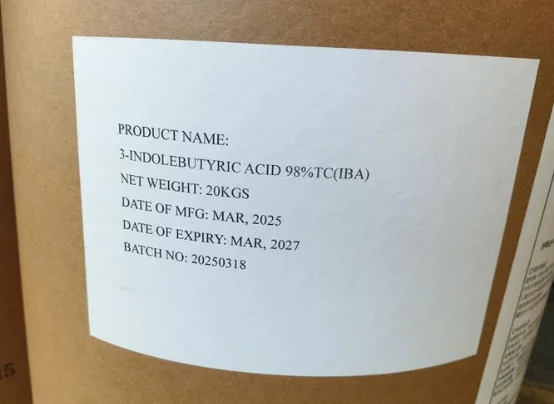Introduction to Spirotetramat Insecticide: A Modern Approach to Pest Control
Modern agriculture faces persistent challenges from sap-feeding insect pests, which annually account for an estimated $200 billion in global crop losses. Traditional insecticides, while effective in some respects, often present limitations regarding residual efficacy, impact on non-target organisms, and the rapid development of pest resistance. Enter spirotetramat insecticide, a revolutionary tetramic acid derivative that has redefined the standards for systemic pest control. Developed through sophisticated chemical synthesis, spirotetramat stands apart due to its unique dual-systemic movement within plant tissues, offering unparalleled protection from emerging and entrenched pest populations. Unlike contact-only or locally systemic compounds, spirotetramat translocates both upwards (xylem) and downwards (phloem), ensuring that even newly formed plant growth, which is often the most vulnerable to sap-feeding insects, receives robust protection. This intrinsic property makes it exceptionally effective against concealed pests in parts of the plant inaccessible to conventional sprays. Its efficacy extends across a broad spectrum of pests, including aphids, whiteflies, mealybugs, scale insects, and psyllids, which are notorious for transmitting devastating plant viruses and causing significant yield reductions. The introduction of spirotetramat has provided growers with a crucial tool, shifting the paradigm towards more sustainable and economically viable pest management strategies, especially in high-value specialty crops where quality and yield are paramount. Farmers utilizing this advanced compound report demonstrable improvements in crop health and marketable yield, underpinning its role as a cornerstone in contemporary crop protection programs designed to address complex pest challenges without compromising environmental integrity.
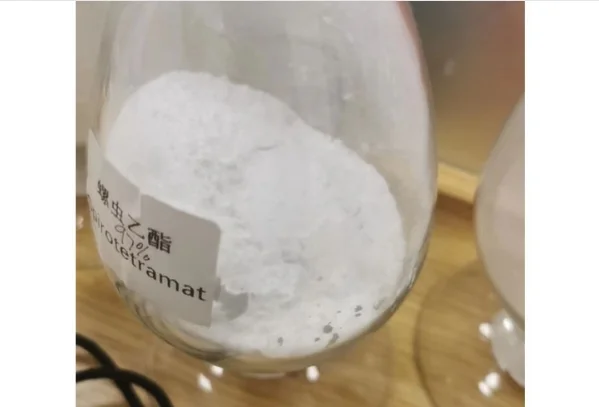
Understanding Spirotetramat's Unique Mode of Action and Systemic Efficacy
The profound efficacy of spirotetramat stems from its innovative mode of action, distinguishing it from conventional insecticides. Classified by the Insecticide Resistance Action Committee (IRAC) as Group 23, it acts as a lipid biosynthesis inhibitor (LBI). Specifically, spirotetramat disrupts the activity of acetyl-CoA carboxylase (ACCase), a crucial enzyme involved in the synthesis of fatty acids and lipids. These lipids are indispensable for insect growth, development, and reproduction, particularly in the formation of cuticles and cell membranes. When sap-feeding insects ingest plant sap treated with spirotetramat, their ability to synthesize these vital lipids is severely compromised, leading to growth cessation, reduced feeding, molting abnormalities, and ultimately, mortality. However, the true genius of spirotetramat lies in its systemic mobility. Upon application, it is absorbed by the plant foliage and roots, subsequently moving both acropetally (upwards via the xylem) and basipetally (downwards via the phloem). This characteristic dual-systemic movement ensures that the active ingredient reaches all parts of the plant, including new shoots, roots, and even fruits, providing comprehensive protection. This feature is particularly critical for controlling pests like aphids and whiteflies that often feed on the undersides of leaves or in curled foliage, areas difficult to reach with topical applications. The basipetal movement is especially unique, offering protection to roots and tubers, and crucial for effective control of pests that migrate between above-ground and below-ground plant parts. This sustained internal defense mechanism provides long-lasting residual activity, significantly reducing the need for repeated applications and thus lowering operational costs and potential environmental exposure. Furthermore, the slow onset of action often allows natural enemies to persist, further enhancing integrated pest management strategies.
Unrivaled Technical Advantages in Crop Protection
Spirotetramat offers a suite of technical advantages that position it as a superior choice in modern crop protection. Its broad-spectrum efficacy against a wide array of sap-feeding pests—including various species of aphids (e.g., green peach aphid, cotton aphid), whiteflies (e.g., greenhouse whitefly, silverleaf whitefly), mealybugs, scale insects, psyllids, and even some mites—minimizes the need for multiple, specialized insecticides, simplifying pest management programs. The dual-systemic movement, as previously discussed, is a core strength, delivering protection to new growth and hidden feeding sites, ensuring pests cannot escape treatment by moving to untreated parts of the plant. This characteristic also provides excellent rainfastness once absorbed, reducing losses due to precipitation shortly after application. Another significant advantage is its long residual activity. Once integrated into the plant's vascular system, spirotetramat remains active for an extended period, offering sustained protection for several weeks, which is invaluable during critical growth stages. This extended control period reduces labor costs associated with repeated sprays and minimizes crop disturbance. Furthermore, spirotetramat exhibits a favorable toxicological profile. It is generally considered soft on beneficial insects and pollinators, such as honeybees and predatory mites, when used according to label instructions. This selectivity is vital for promoting biological control and maintaining ecological balance within agricultural ecosystems, aligning perfectly with sustainable farming practices. Its unique mode of action also makes it an excellent tool for insecticide resistance management (IRM). By rotating or tank-mixing spirotetramat with insecticides from different IRAC groups, growers can effectively disrupt pest resistance development, preserving the efficacy of existing chemical tools for longer. The versatility of spirotetramat allows for various application methods, including foliar sprays, soil drenching, and drip irrigation, providing flexibility for different cropping systems and pest pressures. These cumulative technical benefits underscore spirotetramat's role as a cornerstone technology for ensuring crop health and agricultural productivity.
Navigating the Market: Key Spirotetramat Manufacturers and Formulations
The global market for spirotetramat is characterized by several key manufacturers and a diverse range of formulations, each offering distinct advantages depending on regional needs, crop types, and specific pest challenges. While the active ingredient itself maintains consistent chemical properties, variations in formulation—such as emulsifiable concentrates (EC), oil dispersions (OD), suspension concentrates (SC), and wettable granules (WG)—can significantly influence handling, application efficiency, rainfastness, and overall efficacy. Leading agrochemical companies worldwide have invested heavily in bringing high-quality spirotetramat products to market, ensuring their availability across major agricultural regions. When selecting a spirotetramat product, growers often consider factors such as the purity of the active ingredient, the stability of the formulation, its compatibility with other agrochemicals, and the level of technical support offered by the manufacturer. Purity is paramount, as even minor contaminants can affect efficacy or induce phytotoxicity. Formulation stability ensures a long shelf life and consistent performance under various environmental conditions. Compatibility testing is crucial when tank-mixing with fungicides, other insecticides, or foliar fertilizers to avoid undesirable chemical reactions. Below is a comparative overview of typical considerations when evaluating spirotetramat products from different manufacturers:
Feature/Criteria | Manufacturer A (Example: Brand X) | Manufacturer B (Example: Brand Y) | Manufacturer C (Example: Brand Z) |
Formulation Type | 240 g/L OD (Oil Dispersion) | 100 g/L SC (Suspension Concentrate) | 240 g/L SC (Suspension Concentrate) |
Active Ingredient Purity | >98.5% | >97.0% | >98.0% |
Application Versatility | Foliar spray, Soil drench | Foliar spray, Drip irrigation | Foliar spray, Soil drench, Drip |
Rainfastness Profile | Excellent (due to OD formulation) | Good (once dry) | Very Good (improved SC) |
Tank-Mix Compatibility | High, especially with oil-based products | Moderate, generally good with water-based | High, broad compatibility |
Target Crops | Fruits, Vegetables, Ornamentals | Cotton, Legumes, Vegetables | Wide range: Fruits, Veg, Cotton, Citrus |
Market Price Point (Relative) | Premium | Mid-range | Mid-to-High |
Technical Support | Extensive field support, agronomic advice | Standard product support | Comprehensive online resources, regional reps |
Key Differentiator | Enhanced plant penetration, low volatility | Cost-effectiveness, ease of mixing | Broadest applicability, robust performance |
Choosing the right manufacturer involves a nuanced assessment of these factors, ensuring the chosen product aligns with the grower's specific operational context and economic objectives. Reliable manufacturers prioritize not only product efficacy but also safety, environmental responsibility, and long-term customer relationships through robust technical support and innovation.
Tailoring Solutions: Customizing Spirotetramat for Diverse Agricultural Needs
The adaptability of spirotetramat makes it an ideal candidate for customized pest management solutions across a myriad of agricultural settings. Effective customization begins with a thorough understanding of the specific crop, the prevailing pest complex, environmental conditions, and regulatory requirements of a given region. For instance, in greenhouse vegetable production, where conditions are often conducive to rapid pest reproduction and continuous cropping, a soil drench application of spirotetramat might be preferred. This ensures prolonged systemic protection through the plant's root system, minimizing disruption from foliar sprays and supporting beneficial insect populations crucial for biological control. Conversely, in perennial crops like citrus or deciduous fruits, foliar applications timed with flush growth or observed pest pressure are often more effective, especially when targeting pests like psyllids or scale insects that colonize leaves and twigs. Customization extends to formulation choice; for example, oil dispersions (OD) might be favored in situations requiring enhanced penetration through waxy cuticles or under conditions where rainfastness is a critical concern, such as during periods of unpredictable rainfall. Suspension concentrates (SC) offer good tank-mix compatibility and are generally easy to handle, making them suitable for widespread use. Furthermore, tank-mixing spirotetramat with other active ingredients is a common strategy for enhancing efficacy, broadening the pest spectrum, or implementing resistance management. For example, combining it with an insect growth regulator (IGR) can provide multi-pronged attack against pests at different life stages. Developing customized application programs also considers specific pest life cycles and economic thresholds. Applying spirotetramat strategically at key developmental stages of the crop or when pest populations are nascent can prevent outbreaks and minimize damage, thus maximizing return on investment. This precision application strategy not only optimizes pest control but also contributes significantly to reducing overall chemical load in the environment, aligning with principles of sustainable agriculture and integrated pest management (IPM). Expert agronomists and technical advisors play a crucial role in developing these tailored strategies, guiding growers on appropriate rates, timings, and combinations to achieve optimal results while adhering to local regulations and promoting environmental stewardship.
Real-World Impact: Successful Application Cases Across Global Agriculture
The practical application of spirotetramat has yielded remarkable successes across diverse agricultural landscapes, demonstrating its critical role in effective pest management and yield protection. These real-world cases highlight its versatility and superior performance in challenging pest situations. In California's citrus groves, spirotetramat has proven indispensable in managing Asian citrus psyllid (Diaphorina citri), the vector for citrus greening disease (Huanglongbing). Growers employing spirotetramat as part of their seasonal spray programs report significant reductions in psyllid populations, particularly on new flushes, thereby protecting young trees and preventing disease spread. Its systemic action ensures newly emerged leaves, which psyllids prefer for feeding and oviposition, are protected from within. Similarly, in European greenhouse vegetable production, notably tomatoes and cucumbers, spirotetramat has been highly effective against persistent populations of whiteflies (Bemisia tabaci and Trialeurodes vaporariorum) and various aphid species. A study in the Netherlands reported a 75% reduction in whitefly populations within two weeks of application, leading to healthier plants and sustained marketable yields. The compound’s selectivity towards beneficial insects allows for its integration into sophisticated IPM programs that rely on natural enemies for long-term control. In India's cotton fields, where mealybugs (e.g., Phenacoccus solenopsis) and aphids pose significant threats, spirotetramat has provided robust control, especially in situations where pests are concealed within plant canopy. Farmers observed a dramatic decrease in pest damage, contributing to a 15-20% increase in yield in treated plots compared to untreated controls. This is particularly crucial in regions where pest resistance to older chemistries is prevalent. Furthermore, in Brazilian soybean cultivation, spirotetramat has been used strategically to manage stink bugs and aphids, protecting yields during critical pod-filling stages. Its systemic action ensures that pests feeding on pods are effectively controlled. These examples underscore spirotetramat's capacity to deliver substantial economic benefits to growers by safeguarding crop quality and quantity, ensuring food security, and enabling sustainable agricultural practices even under intense pest pressure. Its consistent performance across varying climates and cropping systems solidifies its reputation as a premier insecticide for high-value crops worldwide.
The Future of Integrated Pest Management with Spirotetramat Insecticide
Looking ahead, the role of spirotetramat insecticide in integrated pest management (IPM) is poised to become even more critical, driven by increasing demands for sustainable agriculture, resistance management, and the need for efficacious tools against evolving pest threats. As global food production intensifies and climate change influences pest distribution and virulence, highly effective, yet environmentally considerate, compounds like spirotetramat will be indispensable. The future integration of spirotetramat will likely involve sophisticated precision agriculture technologies, leveraging data analytics and remote sensing to identify pest hotspots and optimize application timings and dosages. This 'smart farming' approach will maximize the insecticide’s efficacy while minimizing its environmental footprint. Further research and development are expected to explore novel formulations that enhance stability, improve plant uptake, and potentially broaden its spectrum of activity against new or emerging pests, possibly through synergistic combinations with other active ingredients. The commitment to insecticide resistance management (IRM) will also heavily rely on compounds with unique modes of action like spirotetramat. Its judicious rotation within spray programs, along with active monitoring of pest populations for resistance development, will be paramount to preserving its long-term viability. Educational initiatives for growers on best practices for application, tank-mixing, and IRM strategies will be vital. Moreover, as consumer and regulatory pressures for reduced pesticide residues increase, spirotetramat's favorable toxicological profile and precise targeting of sap-feeding pests position it as a preferred choice for crops destined for human consumption. Its ability to protect crops from within means less active ingredient on the surface, contributing to safer produce. Ultimately, spirotetramat represents more than just a chemical solution; it embodies a sophisticated approach to pest control that supports both agricultural productivity and ecological balance, securing its place as a cornerstone technology in the evolving landscape of sustainable crop protection for decades to come.
Frequently Asked Questions about Spirotetramat Insecticide
1. What is spirotetramat insecticide?
Spirotetramat is a modern, systemic insecticide belonging to the tetramic acid derivative chemical class (IRAC Group 23). It is primarily used for controlling a wide range of sap-feeding insect pests in various agricultural crops.
2. How does spirotetramat work?
Spirotetramat works by inhibiting lipid biosynthesis (specifically affecting the ACCase enzyme) in insects, leading to their inability to grow, develop, and reproduce. It is unique due to its dual-systemic movement (xylem and phloem) within the plant, providing comprehensive protection to all plant parts, including new growth and roots.
3. Which pests does spirotetramat effectively control?
It is highly effective against a broad spectrum of sap-feeding pests, including various species of aphids, whiteflies, mealybugs, scale insects, and psyllids. Some formulations also show activity against certain mites.
4. What are the key advantages of using spirotetramat?
Key advantages include its dual-systemic action for complete plant protection, long residual activity, efficacy against concealed pests, compatibility with integrated pest management (IPM) programs due to its favorable profile for beneficial insects, and its unique mode of action valuable for insecticide resistance management.
5. Is spirotetramat safe for beneficial insects and pollinators?
When used according to label instructions, spirotetramat generally exhibits a favorable toxicological profile, making it relatively safe for many beneficial insects and pollinators, including honeybees and predatory mites. This makes it an excellent fit for sustainable pest management strategies.
6. How should spirotetramat be applied?
Spirotetramat can be applied via various methods, including foliar sprays, soil drenching, and drip irrigation, depending on the crop, target pest, and specific formulation. The choice of application method often depends on the type of crop and the pest's feeding location.
7. How does spirotetramat contribute to insecticide resistance management?
Its unique mode of action, distinct from many other insecticide classes, makes it an invaluable tool for resistance management. By rotating spirotetramat with insecticides from different IRAC groups, growers can help prevent or delay the development of pest resistance to specific chemistries, thereby preserving the efficacy of current pest control tools.


